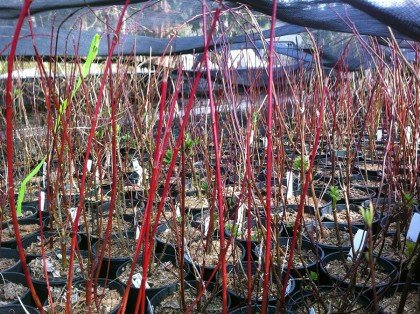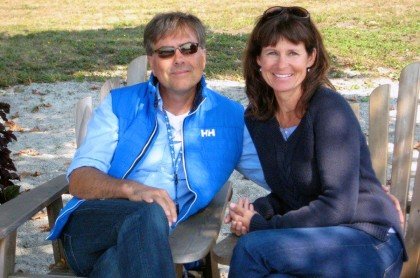By Peg Keenleyside
The Distant View
Suzanne Pinckston, the well-known Point Roberts garden landscaper and principal at the family firm Western Concepts Design Build, has embarked on that rarest of opportunities for a gardener: creating a series of gardens on a really large scale, a series that will last well beyond her own lifetime.
At Seabright Farm, the 62-acre cottage community development along the southern high-bank shoreline of the peninsula, Pinckston and her husband Don are guiding a five-year native plant restoration project that involves a 4-acre stretch of publicly accessible park-like land with extraordinary island views and another 4 acres of wetlands, rain gardens and reforestation.
The restoration of native plant areas in the Seabright development falls under the Whatcom County Shoreline Management Program, a land-use program that seeks to restore the balance between natural ecosystems and new building developments.
“The long-term goal,” Suzanne said about the five-year “rewilding” project she, Don and her family are working on at Seabright, “is to allow the degraded areas to become native forest again, as they were in the distant past.” The restored areas are protected from future development and will provide restored habitat for wildlife, among other ecosystem benefits.
I recently asked Pinckston about some of the challenges – the good, the bad and the  ugly – that she and her family have been facing in executing a landscape project of this size and scope.
ugly – that she and her family have been facing in executing a landscape project of this size and scope.
“The canvas we started with in 2013 was land that was covered in blackberry and other invasive plants,” she said. “So we first looked at the various intact native plant areas on the site to envision what the more degraded areas may have looked like in their natural state, prior to conversion to pasture decades ago and this is where the vision for the project began.”
Working with the landscape architect Simone Oliver at Altmann Oliver Associates, a Washington landscape firm specializing in native reforestation, Pinckston developed a clearing and planting plan. This plan is viewable on the Seabright Farm website at seabrightfarmcottages.com under their “docs and FAQs” menu tab.
The plant palette in the vision for the replanting – some 7,500 plants and trees in total – includes native species shrubs Oregon grape mahonia, Indian plum oemleria ceraciformis, snowberry albus, mock orange phil. lewsii, red current ribes and the delicate native pink flowered Nookta rose. Native trees include Sitka spruce, Douglas fir and western red cedar.
Before planting could begin in fall 2014, however, Suzanne, Don and their children Jack and Tessa, along with local landscaping subcontractors, had to meet the huge challenge of removing tons of invasive plant material from the various planting sites. It took months.
Next came the replanting, with more challenges, last fall.
“October and November 2014 were good months for planting, but December was a muddy mess. We would have to hose down clothes before they went in the washing machine. Then some of our planting areas had to be changed or altered due to heavy rains and ongoing changes from the engineers with the roads,” Pinckston recounted.
This year, the splendid walking trail along the bluff through the reclaimed native plant areas has been opened to the public and Pinckston and her team have been meeting the ongoing challenge of keeping young plants and trees alive along the bluff and elsewhere on the property during a major drought.
Watching Pinckston work, you realize how strong the relationship between a gardener  and her garden can be. She walks the site daily and is completely hands-on in her approach to this long-term project that she and Don are shepherding from design to completion.
and her garden can be. She walks the site daily and is completely hands-on in her approach to this long-term project that she and Don are shepherding from design to completion.
Suzanne also been leading the challenging management task of keeping invasive plants at bay without the use of herbicides. The Whatcom County Shoreline Management Program has performance standards tied to the five-year Seabright Farm reclamation project that include a requirement for an 80 percent survival rate for the reintroduced native plant species and a less than 10 percent invasive/non-native species incursion. To that end, hours and hours of hard labor and mountains of mulch to suppress weeds have already been employed.
As with the magnificent Lily Point Marine Reserve, accessible from Seabright Farm by a staircase from the bluff trail leading down to the beach, the newly replanted areas offer Point Roberts residents and visitors the gift of the natural landscape experience, breathtaking vistas and an intimate look at how to use native plants in a garden landscape.
Up next, the Pinckstons are installing two rain gardens at Seabright and continuing the execution of the main rewilding plan.
When I asked Pinckston about the biggest highlight of this major project of her professional life so far, she said, “It’s working as a family and bringing back the natural native areas.”
Comments
No comments on this item Please log in to comment by clicking here